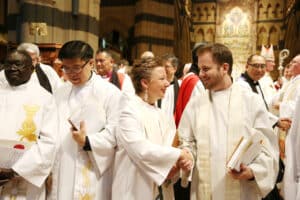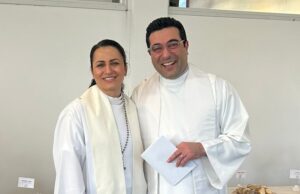
By Chris Shearer
26 November 2021
FIVE new Anglican congregations are set to launch in 2022 as part of the diocese’s efforts to re-invigorate church-planting across Melbourne.
Among the plants are a congregation in the inner west, based out of Cairnlea, one at Merri Creek and Fairfield, one at Diamond Creek, one at Berwick and one at Tarniet.
Church planting canon Julie-anne Laird said that these plants were just the tip of the iceberg. She said twenty-five churches had shown an interest in setting up church plants across the diocese in the near future.
Ms Laird said that despite the disruption caused by the pandemic it was “super encouraging” to see a number of churches interested. Ms Laird was appointed to the church planting role along with Reverend John Sanderson in September 2020.
Assistant Bishop Kate Prowd reported to this year’s synod that six church plants have been established by the diocese in the last five years, including two in 2021.
Her report added that the Diocese of Melbourne’s revised Vision and Directions document underpinned the mission for the portfolio, in particular the strategic direction to be “a compelling and outward looking presence in our communities”.
“Church planting is integral to the diocese’s overall vision of growth,” she told The Melbourne Anglican.
“Church plants reflect the creative and innovative steps we are taking in growing Christian communities and offering the love and forgiveness of Christ to all.
“For some, for whom more traditional church buildings seem alien … a church plant can offer ways to engage and interact that become points of entry into church life and an exploration of the spiritual life.”
Ms Laird said that a key idea behind the new plants was to establish an Anglican presence in areas where there was currently none. She said there was also a strong emphasis on establishing plants in ‘growth corridors’, the new suburbs that are being developed and populated as Melbourne expands.
“There’s actually quite a lot of people who are religious in those areas who are looking for a place to go,” Ms Laird said.
“And also there’s just a heap of people who don’t know Jesus and may be a little lost.
“They bought their house, they’re trying work out what it means to have fulfilled their dreams in some ways, and where is their faith in that.
“A lot of people when they start having kids they start thinking about what they believe, so there’s heaps of opportunities to help people know Jesus in those communities.”
Bishop Prowd agreed that church plants offered an excellent way to reach people in these newer communities.
“Being unencumbered by maintenance of church buildings and years of tradition, church plants can approach mission with a freedom of expression that results in growth,” she said.

“There really is no one-size-fits-all model of doing and being church. We need different and complementary models.
“It’s exciting to see how ADOM is open to pioneering and supporting variety.”
Ms Laird said that the diocese was involved in considering which areas would be best suited for a church plant, but the process was often more bottom-up, with churches coming to the diocese with an intention to start a plant.
Prospective church planters should have the support of their local church and an idea of where they want to establish the plant, she said.
“You might have some people come to your church and quite a few of them live in a particular area that doesn’t have a church,” she said.
“So they gather a group of people and … I basically just help them along the way.”
Potential church planters are set up with weekly training sessions with ministry training organisation City to City up to the launch, and then have monthly training and support sessions for the following two years.
Ms Laird said that anyone interested in beginning the process of establishing their own plant should reach out to her at julieannelaird@gmail.com.







